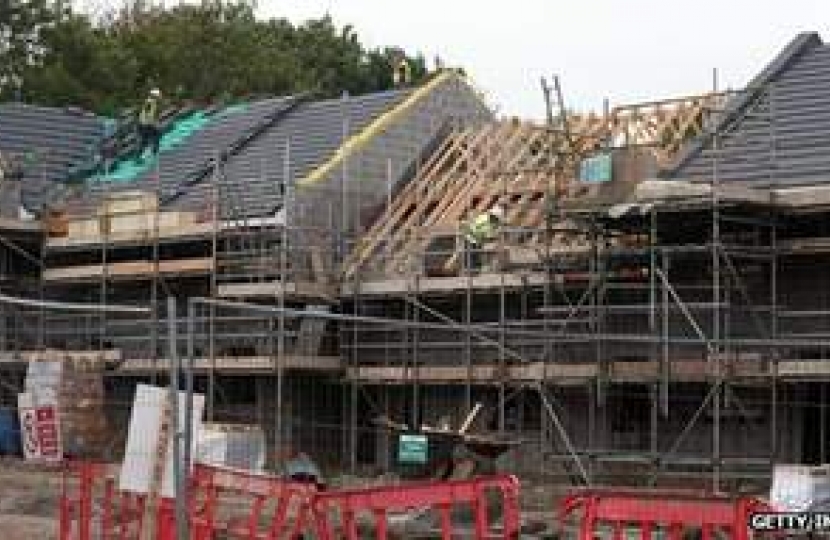
Crispin Blunt MP and Lord Richard Rogers, co-Chairs of the APPG for London’s Green Belt, have today responded to the draft revised National Planning Policy Framework consultation by endorsing a detailed response by the London Green Belt Council and co-signing a covering letter highlighting the need for more Green Belt protection in the planning process.
Key points highlighted in the letter include calls for more clarity on the definition of ‘exceptional’ and ‘very exceptional circumstances’, which can be used to override the protection of green-field in the Greenbelt for development, more powers for local authorities to challenge new homes targets if the only means of achieving this by building on the Green Belt, housing needs assessments taking into account Green Belt constraints, Green Belt protection for aerodrome sites, and stricter rules to prevent developers taking advantage of Green Belt development opportunities.
Commenting on the letter, Crispin Blunt said: “Current planning policy contains a number of unacceptable loop-holes that will drive either local authorities or the Planning Inspectorate to allow developers to build on protected green land in the Green Belt. These need to be tightened if we are to protect the Green Belt from terminal erosion. Its protection needs to be the number one priority, not an afterthought. This does not mean that new and affordable homes targets cannot be met as there is more than enough brownfield and urban land available to meet these. Large developers pressing local authorities to allow developments on Green Field sites are doing so to make supernormal profit money, not to solve our housing needs, and often fall short in their commitments to building affordable housing when they do so.”
Text of letter:
Dear Sir/Madam,
Response to consultation on the draft revised National Planning Policy Framework
On behalf of the All Party Parliamentary Group (APPG) for London’s Green Belt we enclose a response to the consultation on the draft revised National Planning Policy Framework from The London Green Belt Council (LGBC), which acts as the Secretariat for the APPG.
We fully endorse this response and share the concerns of the LGBC about certain aspects of the draft NPPF that are insufficiently clear or robust in addressing the protection of The Green Belt.
In particular, we would stress our concerns on the following points:
- The ambiguity and capacity for wide interpretation of the terms ‘exceptional circumstances’ and ‘very special circumstances’ whereby green-field sites on the Green Belt may be released for development in local authority Development Management Plans, or where specific Green Belt development proposals may be accepted for reasons that are not necessarily justified. We believe that ‘exceptional’ and ‘very exceptional’ circumstances need to be clearly defined to provide more protection for the Green Belt.
- The Secretary of State’s letter to Crispin Blunt dated 27th April 2018 confirmed that local authorities can offer Development Management Plans to the Planning Inspectorate which fail to meet local housing targets while having greenfield Green Belt land available, having instead explored all other options including increased density, high-rise, brown-field and infill development. However, these plans may be, and indeed probably would be, deemed unsound by the Planning Inspectorate. In other words, refusing to build on greenfield sites of the Green Belt is not clearly deemed as sufficient reason not to meet housing targets, whereas this should explicitly be the case. Any planning application appealed to the Inspectorate on the basis of a plan the Inspectorate had deemed unsound would then have a strong chance of success. This is a gaping hole in the defence of the Green Belt and the NPPF should be explicit in closing it. We recommend that the Inspectorate should not be able to deem a plan unsound purely on the grounds that greenfield Green Belt land is not being recommended for release to meet housing targets. Instead, any such judgment should be based on evidence which demonstrates that the local planning authority has not done all it reasonably can in terms of increased density, high rise, brownfield and infill development to meet its housing target.
- The area of land that any local borough or district has which is nominated as undeveloped or greenfield space in the Green Belt should be taken in to account when assessing local housing need and housing targets. Overall, there are enough brownfield sites across the country to more than meet national new homes targets.
- Existing airfields in the Green Belt should be clearly defined as green space in Green Belt designated land to avoid their development and the loss of much need local aerodromes.
- Developers’ should not be allowed to buy and hold Green Belt land for possible future development, nor should they be allowed to dilute promises on the amount of affordable housing included in development plans on the grounds that these are not profitable enough after planning consent has been given.
We very much hope that you will take these comments into consideration.
Yours sincerely,
Crispin Blunt MP
Co-Chair, APPG for London’s Green Belt
Lord Rogers of Riverside CH
Co-Chair, APPG for London’s Green Belt
 1920x320_itok-NfHKlbJW.jpg)